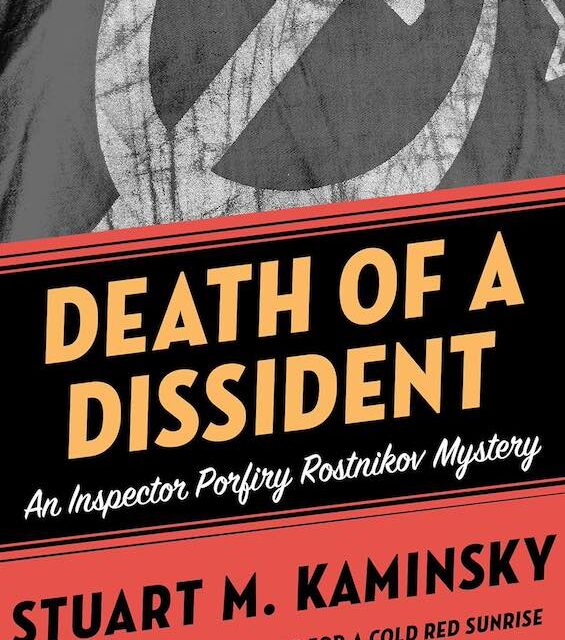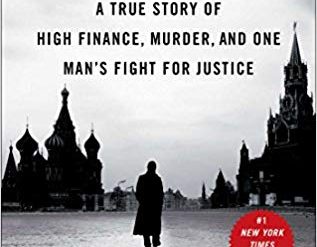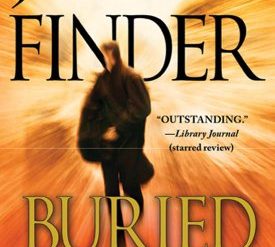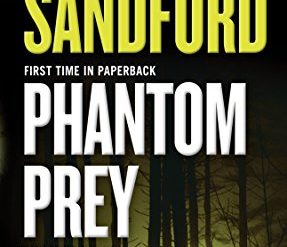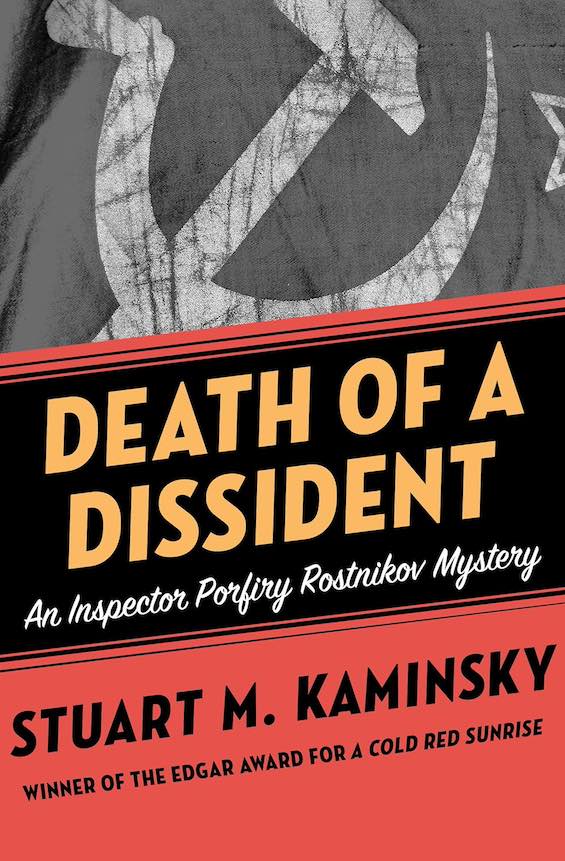
From 1981 to 2009, the late Stuart Kaminsky wrote a series of sixteen Russian mystery novels centered on Inspector Porfiry Petrovich Rostnikov and his team in the Soviet, and later Russian, Ministry of Internal Affairs. The novels trace the evolution of the country’s history from the final years of Communist rule into the first decade of the 21st century, as Vladimir Putin consolidated his rule. These novels are classic police procedurals. In each book, the investigative team pursues at least two, and usually three, cases simultaneously. Most often, each of the three leading members of the team spearheads a single case. Some prove to be interrelated.
The stories in this deeply researched series revolve around the members of Inspector Rostnikov’s department. Although they begin as investigators in the prestigious office of the prosecutor, Rostnikov falls out with the KGB. The fearsome internal security agency engineers Rostnikov’s demotion to make-work assignments in the Office of Special Affairs, which houses police officers thought to be troublemakers. Members of his team follow him there.
I’m gradually working my way through this series. Here, I’m listing the first nine books. Stay tuned for additions.
This post was updated on July 9, 2024.
Here are the members of the investigative team
Although others work in the Office of Special Affairs, and officers of the KGB surface from time to time as antagonists, only four men, and later one woman, are central, recurring characters in these classic police procedurals.
Porfiry Petrovich Rostnikov
A child veteran of the Great Patriotic War (World War II), Rostnikov’s leg was crushed at the age of fifteen in the Battle of Rostov. He is known as “the Washtub” for his broad, stolid appearance and great strength. Although he limps badly, Rostnikov has compensated by weightlifting and becomes a champion in the sport. His wife, Sarah, and their son Iosef, occasionally appear in the books as well.
Emil Karpo
Karpo is a tall, cadaverous bachelor with menacing features and a severe demeanor that frighten even some hardened criminals. Dark-skinned and with vaguely Asiatic characteristics, he is known as “the Tatar” or, more frequently, as “the Vampire.” Humorless and a fanatic Communist, he is passionately dedicated to protecting the state. When the Soviet Union dissolves in 1991, he feels betrayed. Karpo maintains a cross-referenced catalog of cold cases in his tiny apartment and pursues them in his spare time. Like his boss, Inspector Rostnikov, he is a brilliant investigator.
Sasha Tkach
Sasha is the youngest member of the team. He must spend a great deal of time caring for his wife and young child—later, two children—and struggling with his domineering mother, who has insisted on moving in with the family. But he, too, has the rank of inspector and plays a pivotal role in some of the team’s big investigations when he isn’t off on his own assignments.
Yelena Timofeyeva
Yelena is the niece of Anna Timofeyeva, who had wielded great power in the office of the Procurator. Now retired, she promotes Yelena and helps Sasha by distracting his exasperating mother, allowing him and his wife some peace. Yelena will become the love interest of Rostnikov’s ex-soldier son, Iosif.
Colonel Snitkonoy
The colonel is the group’s boss. He’s vain, pompous, and deeply insecure, but he cuts an impressive figure in his splendid uniform. Known to one and all as “the Gray Wolfhound,” the colonel lives in constant fear that his superiors will find a way to undermine his authority and seize control of the little fiefdom he rules in the Ministry of State Security.
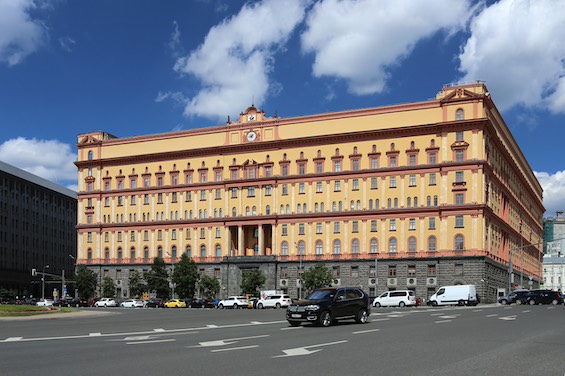
And here are the novels in chronological order
Death of a Dissident (1981) 289 pages ★★★★☆—A grim murder mystery set in the USSR
Set in the USSR not long after the 1979 Soviet invasion of Afghanistan. Leonid Brezhnev rules. Rostnikov investigates the murder of a prominent dissident. Karpo and Tkach are introduced.
Black Knight in Red Square (1984) 341 pages ★★★★☆—The collapse of the USSR is underway in this detective novel
1981. A desperately ill Brezhnev’s last year in power. Rostnikov duels with a notorious international terrorist who might have given Carlos the Jackal a run for his money. The KGB works to undermine him.
Red Chameleon (1985) 303 pages ★★★★☆—A Russian police procedural set in the Soviet Union
1985. Brezhnev is long dead. With the Chairman’s two successors now also both dead, Gorbachev is about to take the reins. Rostnikov is out of favor for having tried to bribe a KGB official to issue exit visas for himself and his Jewish wife. Karpo and Tkach now lead the team’s two principal investigations while Rostnikov investigates the theft of the Gray Wolfhound’s beloved white Chaika automobile.
A Fine Red Rain (1987) 228 pages ★★★★☆—In Gorbachev’s Russia, corruption and a serial killer
1986. Gorbachev has announced glasnost and perestroika, upending the Soviet state. Rostnikov, Karpo, and Tkach take on three seemingly unrelated cases. A circus acrobat has died in suspicious circumstances. A serial killer is murdering prostitutes. And a black marketeer is peddling knock-off American films and video players.
A Cold Red Sunrise (1988) 332 pages ★★★★★—A terrific historical murder mystery set in the USSR
1987. Gorbachev’s reforms continue. Rostnikov and Karpo investigate a murder in a Siberian village where dissidents are exiled. Indigenous people of the region are involved somehow. The KGB tries to frustrate the team’s work and take credit for any success they may have. This book won the Edgar Award for Best Novel from the Mystery Writers of America.

The Man Who Walked Like a Bear (1990) 212 pages ★★★★☆—An honest detective confronts reality in Soviet Russia
1989. Gorbachev is negotiating arms treaties with Ronald Reagan. Rostnikov’s beloved wife is recovering from brain surgery. Karpo has another of his debilitating migraines. And Tkach’s mother is interfering in his marriage. Meanwhile, two madmen hijack a city bus, the seventeen-year-old daughter of a leading member of the Politburo is plotting to kill him, and a giant who walks like a bear has just gone berserk in the hospital where Rostnikov is visiting his wife.
Rostnikov’s Vacation (1991) 244 pages ★★★★☆—A government conspiracy in the tumult of the Gorbachev era
1990. Gorbachev is approaching the end of his leadership. Karpo is on the trail of a homicidal lunatic who has thrown a young woman to her death from a window. Tkach pursues a gang of thieves who are stealing computers. And Rostnikov stumbles into a murder mystery in the Crimea, where he has been ordered to take a vacation. A policeman investigating a conspiracy to overthrow the government has been murdered.
Death of a Russian Priest (1992) 230 pages ★★★★☆—A puzzling Russian murder mystery set in Yeltsin’s time
1991. Boris Yeltsin is now President of Russia. The KGB is officially gone. And the Gray Wolfhound is in the ascendancy. He assigns Rostnikov and Karpo a politically sensitive case: the murder of a famously outspoken village priest. But Rostnikov is preoccupied with family matters. Karpo, too, is off his tether. A dedicated lifelong Communist, he is depressed by the dissolution of the Soviet Union. And Tkach is acting out violently, frustrated by rising prices and shortages of everyday necessities. Meanwhile, the KGB lives on under a new name—and it’s out to replace the Gray Wolfhound and his team.
Hard Currency (1995) 364 pages ★★★★☆—A Russian detective on a murder case in Castro’s Cuba
Sasha Tkach and Emil Karpo are in Moscow, on the trail of a Russian serial killer with multiple personality disorder. And Karpo is also looking into the death of the Kazakhstani foreign minister, allegedly of natural causes. Meanwhile, their boss, Inspector Porfiry Rostnikov, has flown to Havana with their new colleague, Yelena Timofeyeva. They’ve been sent to investigate whether a Russian living there has killed a local woman, as the Cuban police insist.
Blood and Rubles (1996) 337 pages ★★★★☆—Crime and corruption in Boris Yeltsin’s Russia
This time around there are four simultaneous cases, and each promises to be more frustrating than the others. As always, Rostnikov has no choice but to spread his team thin, dispersing one or two detectives to each of the four investigations. And every one Every one of the four cases brings to light one of the dominant trends in mid-90s Russian society—and a distinct aspect of crime in the country during its transition from Communism to capitalism.
Tarnished Icons (1997) 396 pages ★★★★★—A brilliant police procedural set in 1996 Moscow
Change has come to the Office of Special Investigations. The Gray Wolfhound is gone, promoted upstairs. A former KGB colonel has replaced him. And Porfiry Rostnikov’s ex-soldier son, Iosif, has joined the team. Meanwhile, Russian society continues to disintegrate under the increasingly drink-addled Boris Yeltsin. And a crime wave has Moscow in its grip. Unfortunately, in the face of all this, the team must take on three of the most puzzling cases they’ve encountered in years.
About the author

Stuart Kaminsky died in 2009. In his obituary in the New York Times, Margalit Fox wrote, “Stuart M. Kaminsky, a film scholar turned detective novelist who was widely known for his prodigious output, complex characters and rich evocations of time and place, including Hollywood in its Golden Age, died on Friday in St. Louis. He was 75. The cause was hepatitis C, which Mr. Kaminsky contracted as an Army medic in the late 1950s, his wife, Enid Perll, said. . .
“The author of more than 60 crime novels, Mr. Kaminsky typically wrote two or more books a year. A past president of the Mystery Writers of America, he was named a Grand Master, the organization’s highest honor, in 2006.”
The sixteen Inspector Porfiry Rostnikov books constitute one of three long-running series of crime novels Kaminsky wrote. He won an Edgar Award in 1989 for one of the novels in the series.
For related reading
For a broader look at this genre, see The best police procedurals.
Decades before Stuart Kaminsky launched this series, an American writer named Ed McBain had been writing the first long-running American police procedural series. And Kaminsky’s hero, Porfiry Rostnikov, is a fan of the books. I’ve reviewed the first of them at Cop Hater (The first book in the original police procedural series).
Check out The best Russian mysteries and thrillers and Good books about Vladimir Putin, modern Russia and the Russian oligarchy.
You might also enjoy my posts:
- Top 10 mystery and thriller series
- 20 excellent standalone mysteries and thrillers
- 30 outstanding detective series from around the world
- Top 20 suspenseful detective novels
- Top 10 historical mysteries and thrillers
And you can always find my most popular reviews, and the most recent ones, on the Home Page.

